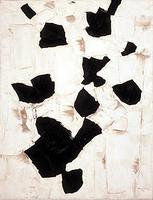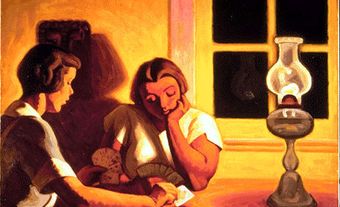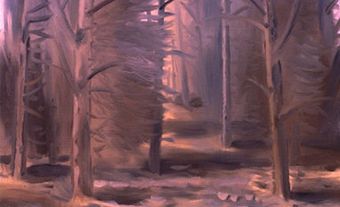Automatistes, Les
The painter Paul-Émile BORDUAS, inspired by the stream-of-consciousness writing (écriture automatique) of French poet André Breton, transposed this idea onto canvas, PAINTING spontaneously and without preconception. The Automatiste movement was born when Borduas showed 45 of these gouaches at the Ermitage Théâtre in Montréal from 25 April to 2 May 1942. He gained a few followers from among his students at the École du Meuble, including Marcel BARBEAU, Jean Paul RIOPELLE and Roger Fauteux; others, such as Pierre GAUVREAU and Fernand LEDUC, came from the École des beaux-arts in Montréal, and Jean-Paul MOUSSEAU came from the Collège Notre-Dame. The group met in Borduas's studio to discuss Marxism, surrealism and psychoanalysis, all subjects looked down on by the church.
The Automatistes held a number of exhibitions, notably in New York in 1946 and in Paris in 1947. Their first Montréal exhibition was on Amherst St in April 1946, and they were designated as "Automatistes" at their second Montréal showing, on Sherbrooke St in February 1947. What had begun as a dissident student group was now an important cultural movement.
In 1948 Borduas released the manifesto REFUS GLOBAL, which served as a preface for a series of texts by Claude GAUVREAU (poet and brother of Pierre), Françoise Sullivan (a dancer), Bruno Cormier and Fernand Leduc, and expressed the views of the Automatistes. It extended the movement's aesthetic intuitions into the political field, "resplendent anarchy" being the mirror of the spontaneous painting encouraged by the group. The group dispersed after the manifesto was published, for Riopelle and Leduc had already left for Paris. Their last show - "La Matière Chante" organized by Claude Gauvreau - took place in 1954.

 Share on Facebook
Share on Facebook Share on X
Share on X Share by Email
Share by Email Share on Google Classroom
Share on Google Classroom





